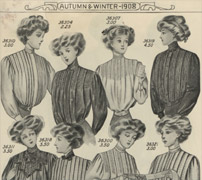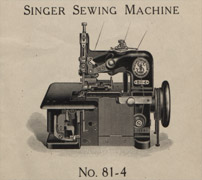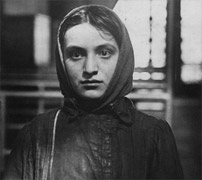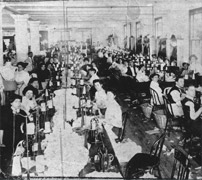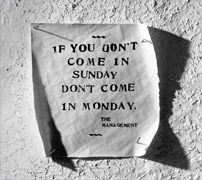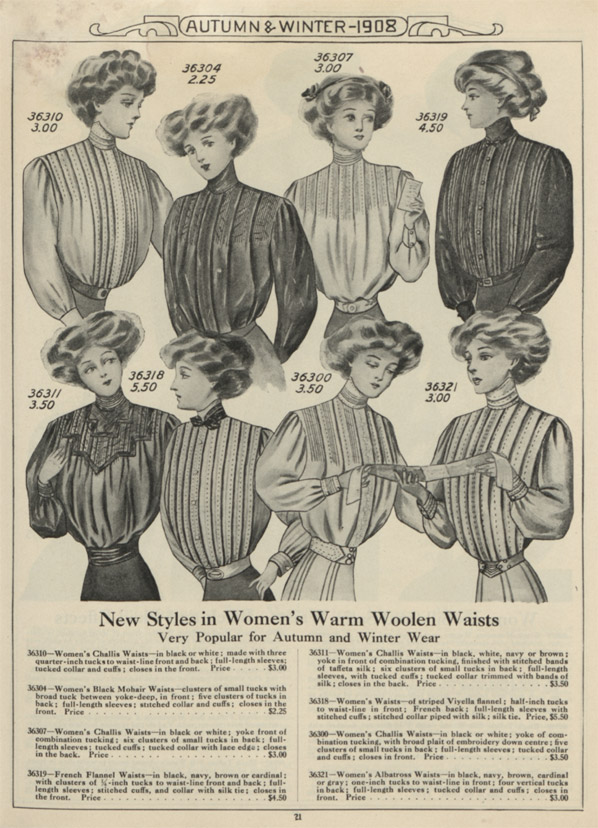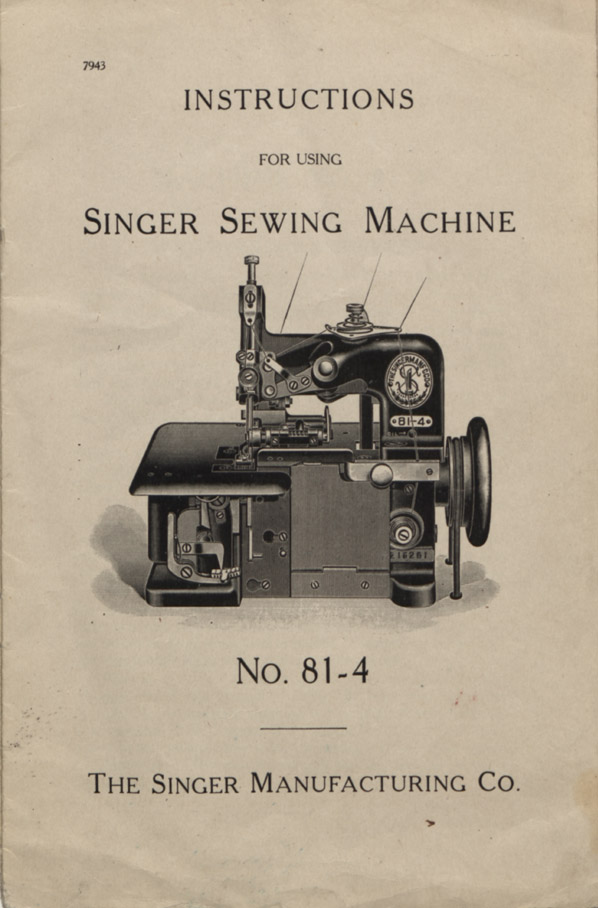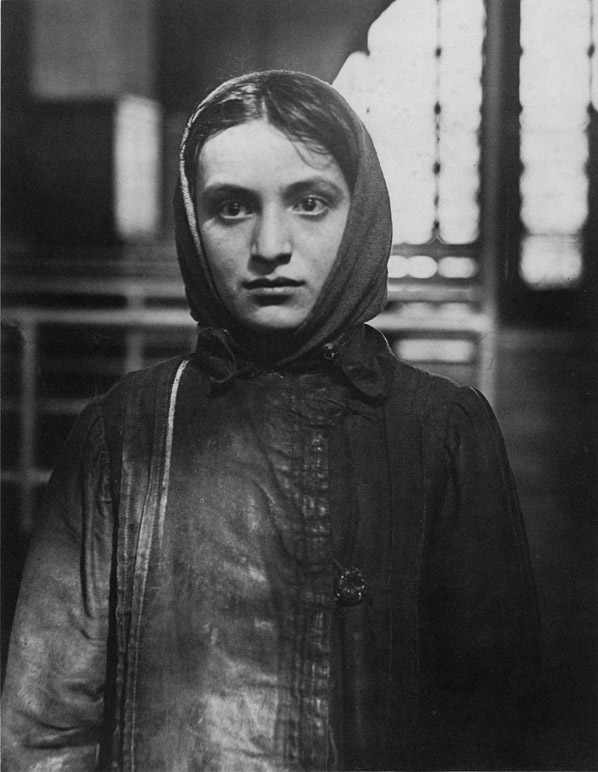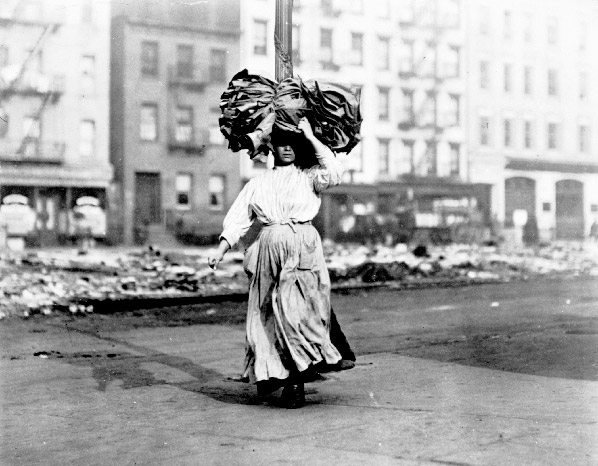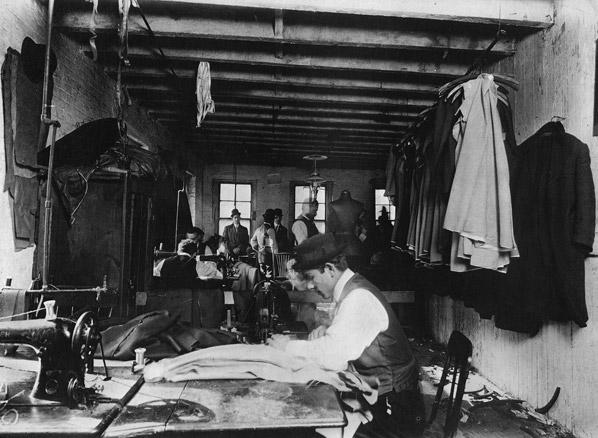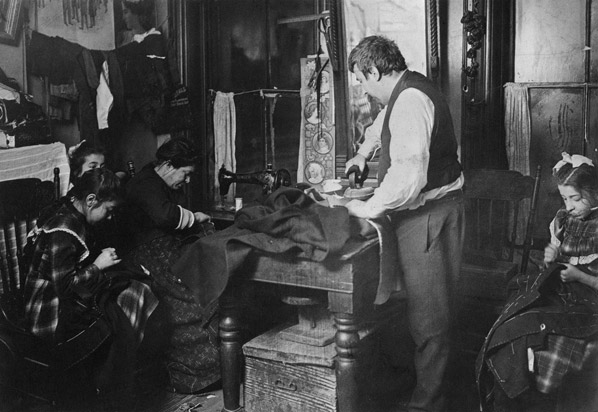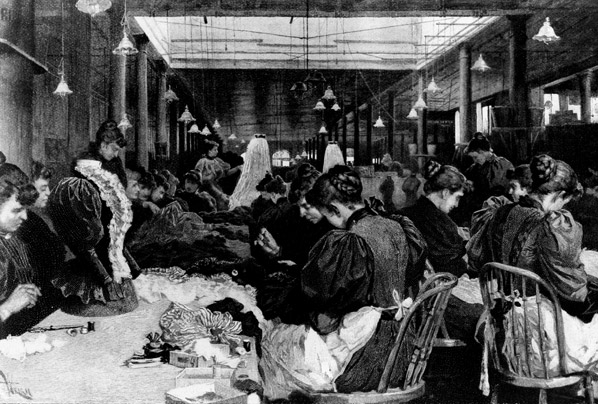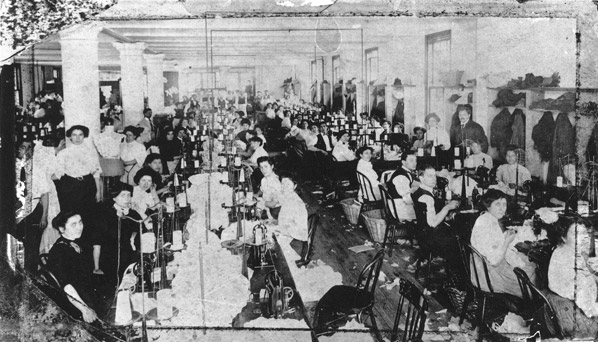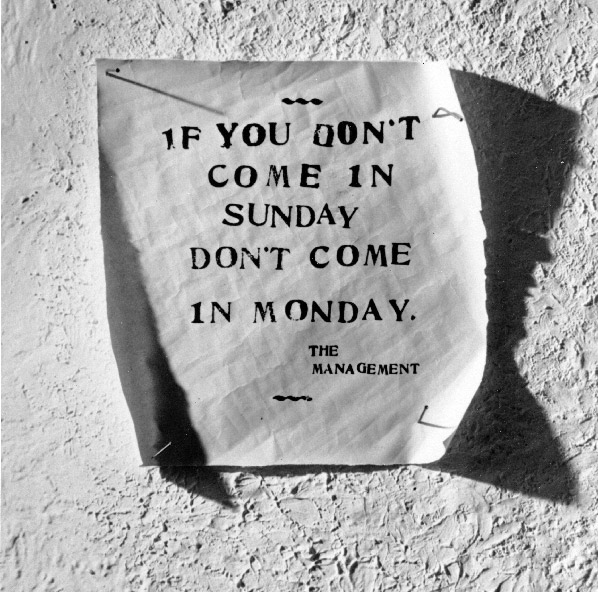
In the late nineteenth century, New York City emerged as the nation's center for garment-making, producing well over 60% of all the clothes manufactured in the country. One in every three wage workers in the city worked in garment manufacture, and the industry played a major role in the economic life of the city. Millions of immigrants, mostly Italians and Jews from Eastern Europe, came to the city to find work in the clothing industry. Young women predominated in the more than 6,000 small sweatshops and growing numbers of larger factories. In this cut throat competitive industry, workers endured low wages, long hours, unhealthy conditions, and speed-ups. Modern factories like Triangle were ruthless in their pursuit of increased productivity as they sought to produce women's dresses while flexibly respond to changing fashion.
CLICK ANY IMAGE TO ENLARGE WITH CAPTION
